Easier doesn’t mean easy. The cooler temperatures just about doubled the finisher rate (59% vs. 34%), however it didn’t feel that much easier that last year.
The website has an overly detailed course description, however it does a poor job of adequately explaining how difficult the trails are (i.e. there are exactly 3 runnable sections not the dozens described therein). So here’s how I would describe the course.
Official Real Course Description
It’s really, really, really hard until it gets merely challenging then becomes difficult again. Not enough? Fine.
The first mile is on a mostly downhill paved road. Obviously. Because how else is a mountainous 100 supposed to start? The first twenty miles are the hardest section of the course. You’re hit with three of the five hardest climbs (maybe 3 of 4) pretty much one right after the other. They’re long. They’re steep. They’re hard. You’re going to feel pretty worked over by the time you get to the first truly runnable section, which starts at the top of the climb following the Lower Pine Bottom aid station. It’ll only last 2 miles, but the next couple sections into Hyner Run are among the easier of the course. You’ll still be hiking a decent amount, but the grades aren’t too steep. I’ve ended up covering the second 20 miles at a faster pace than my first 20 both years.
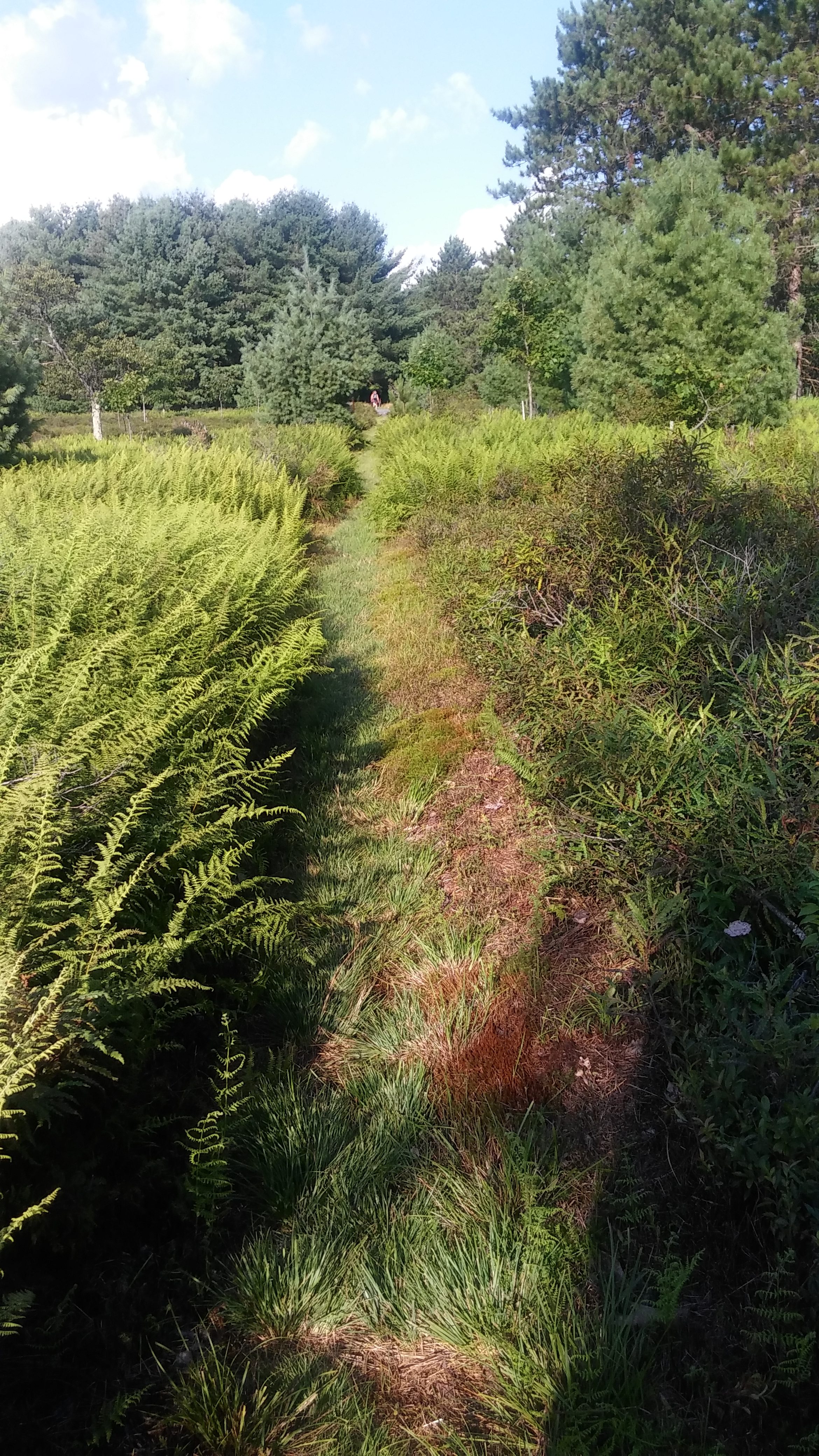
And then . . . well, let’s just say the easy parts are done until you see your second sunrise. There’s lots of technical trails that will lead you up, down, and sideways. The couple miles heading into Slate Run aren’t too bad, but the climb out of this AS at mile 63.8 cracks the top 5 hardest list. After Algerines, the course mixes things up by going down instead of up with a nasty decent where you’ll end up going slower than several of your climbs. This ends at the base of the hill that will eventually deposit you at Long Branch. And yes, I just condensed about 30 miles into a very short paragraph. Don’t worry, you’ll be doing this section in the dark and wouldn’t recognize any landmarks I would give you otherwise so really all you need to know is the trails suck once it gets dark.
The good news is that from here on out, the trails fairly easy outside of the climb after Blackwell and the final decent into the finish line. Be careful heading down into Blackwell though as the trail is about 12 inches wide and drops off steeply to your right. It doesn’t help that you’ll probably get here 21-26 hours into your run when your coordination starts to fail you. The only other tough section of trail is a steep half mile climb at about mile 90. Besides that, it’s smooth sailing. Or would be if you hadn’t already fried your legs on all the prior nasty parts of the course.
Splits
Here are my splits for the past 2 years. I wouldn’t recommend using these as targets since you really need to run based on how you feel, but I think my 2016 splits are a good benchmark for a safe finish. You can definitely finish if you’re running slower than these, but you have little margin for error. Hopefully, they can keep you from stressing out too much about your pace.
ES100: The Sequel
As I mentioned in my preview, my only real goal was to enjoy the race. This was going to be a mental challenge more so than a physical one. My strategy was to push a bit at the beginning and build a time buffer on my pace from last year. I executed this well and was almost 2 minutes faster getting to the single track trail. This let me have a shorter wait in line and then move along the flat section before the first climb quicker. The temperatures were a little cooler than last year, but I think the humidity must have been higher because I was sweating like I was in a sauna well before sunrise. You get onto the first climb at mile 3ish and it really hits you in the face. Each mile up until the first aid station was a minute or two faster than last year so with each mile I started to relax a bit more and enjoy the run.
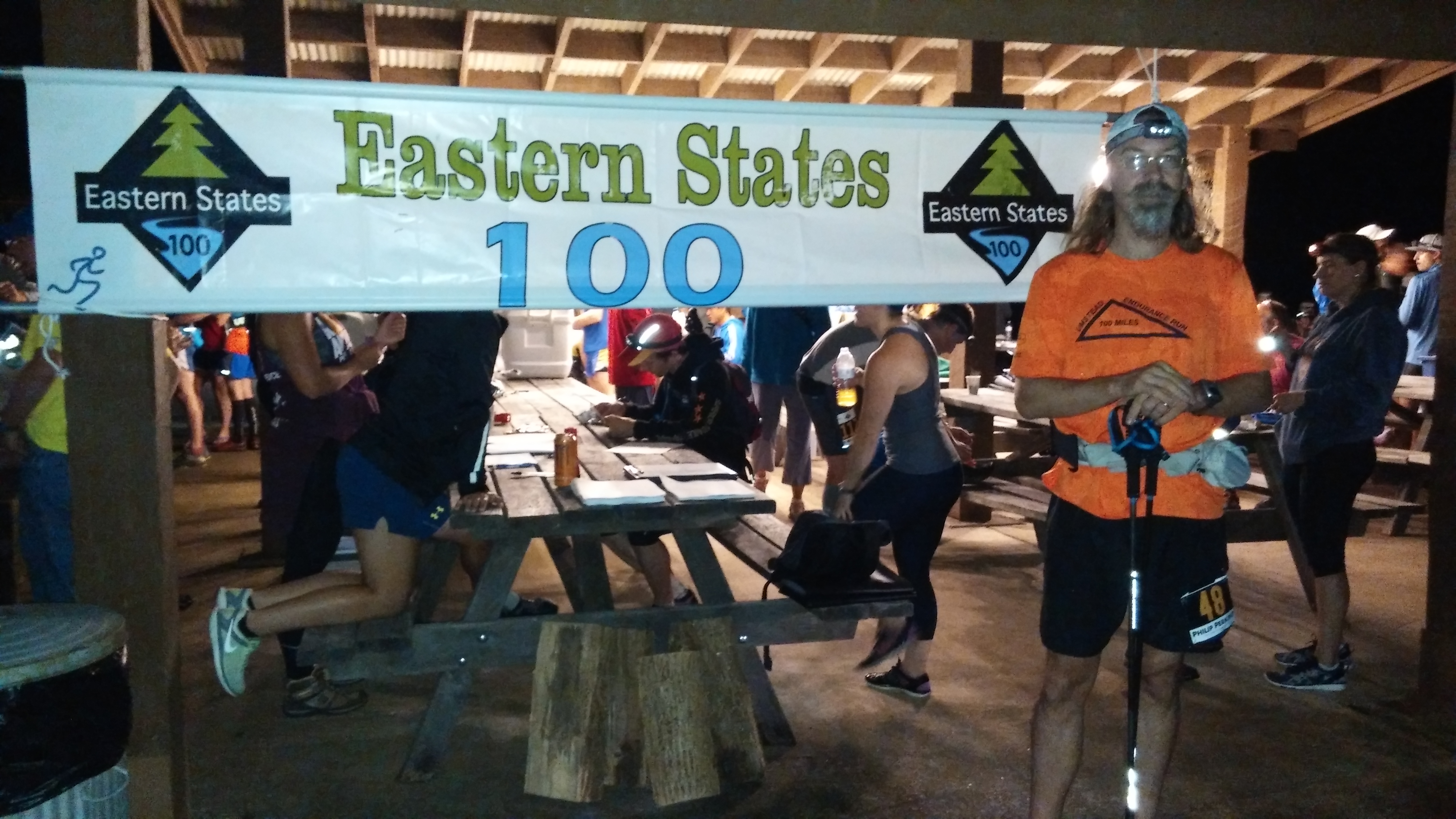
I rolled through the second aid station (Ramsey) feeling pretty good about my prospects for the day. Eleven miles in and my plan was working to perfection (did I just jinx myself?). Then I got onto the second climb of the day and things started to get real. I always find it amazing how the mind can block out and forget bad and/or painful things. I know for a fact that this is the only reason I can continue to do these types of distances. I remember the second climb being rather difficult, but it seemed to last about twice as long as I remembered. This would be a continuing theme over the rest of the race. I finally reached the top and it was heading down a rocky section of trail that I took my first fall at about mile 15. I was putting my water bottle back after taking a drink so wasn’t using my trekking poles and down I went. I scraped my right shin pretty good and slammed my left ring finger something wicked. Great. I was initially fearful that I had broken the darn thing (and how was I to grip a pole in that condition?), but luckily it was just jammed and didn’t cause too many issues the rest of the way.

I didn’t have too many of my 2016 splits memorized, but the one I was focused on early was the 3rd aid station (Lower Pine Bottom) at mile 17.8. I had thought I would be able to cruise in here maybe 30 minutes faster than the prior year, but I only ended up getting in 12 minutes faster. Hmmmm. Not the start I was fantasizing expecting hoping for. But I was ahead of last year and finishing was my only goal so I was still feeling pretty good. The climb out of this aid station (you start to hate coming into them eventually because you know you’re just going straight up as soon as you leave) isn’t too bad until it is. You start out on a gravel road and the grade isn’t too steep. Unfortunately, this only gets you a third of the way or so up before you’re back onto the single track trail and it starts to get pretty steep.
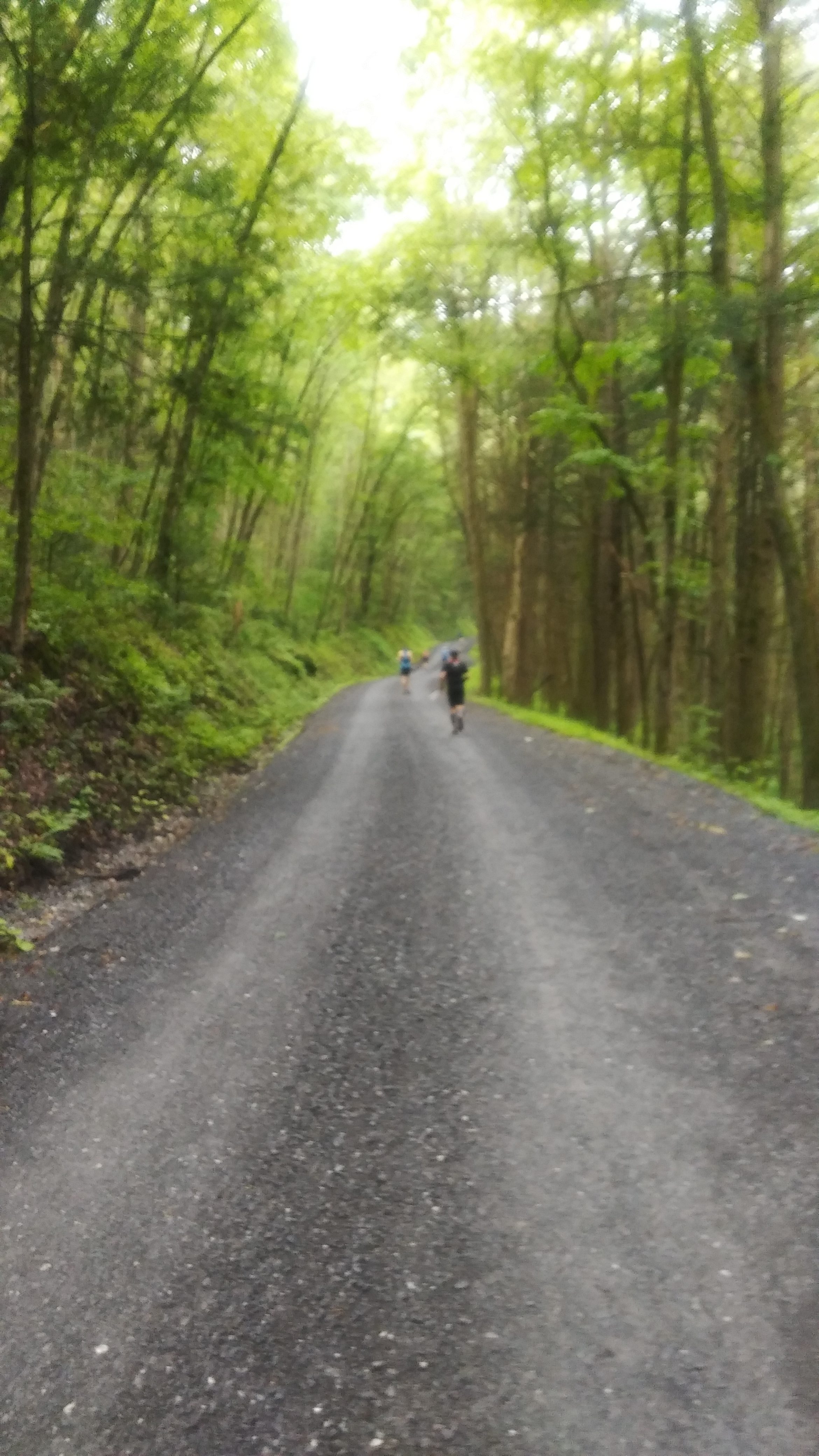
“On Your Left”
So similar to last year, I was continually getting passed on the trails. Like a lot. I’m sure I was passed several hundred times over the course of the race. Wait. How is this possible when I finished 78th? Because the same 10-15 people kept passing me over and over and over again. It was freakin Groundhog Day. But that’s OK, because this means I was passing them back in the aid stations. My goal is to get into the aid stations, get what I need, and be back on the trails within 5 minutes or less during the day (at night I take as long as I need as I’ve typically shifted to survival mode by this time). My NASCAR timed pit stops has caused me to forget things in the past so this time I had directions written out in each of my drop bags of what I needed to do (1. Drink Ensure Plus, 2. Get salt caps, 3. Grab XYZ). This worked to perfection for me and I didn’t miss anything at those aid stations. Going forward, I think I’ll tweak this and have directions written out for each aid station and carry it with me since there aren’t drop bags located at each aid station.
I get to the top of the climb at mile 20, which is the start of the gentle 2-mile downhill section that I’ve been looking forward to for about an hour and I realize something. This is harder than it should be. It’s late morning by this point and the temperatures are starting to increase, but they’re much cooler than last year. And this is where I think I saved my race. Normally, I would have continued to press on thinking that cooler temperatures means I should be running fast. That now is when I should be banking time on last year. But I decided to go the other way. I was already running quicker so I was presented with the opportunity to dial back the effort and just chill. I’m supposed to be enjoying this, right? I was still confident I could finish stronger than the shuffle I was reduced in the prior year so there was no reason to push. If I wasn’t feeling strong (and I really wasn’t), then I needed to adjust my expectations and just go with the flow. So I backed off the effort and decided to just enjoy the day. And I did.
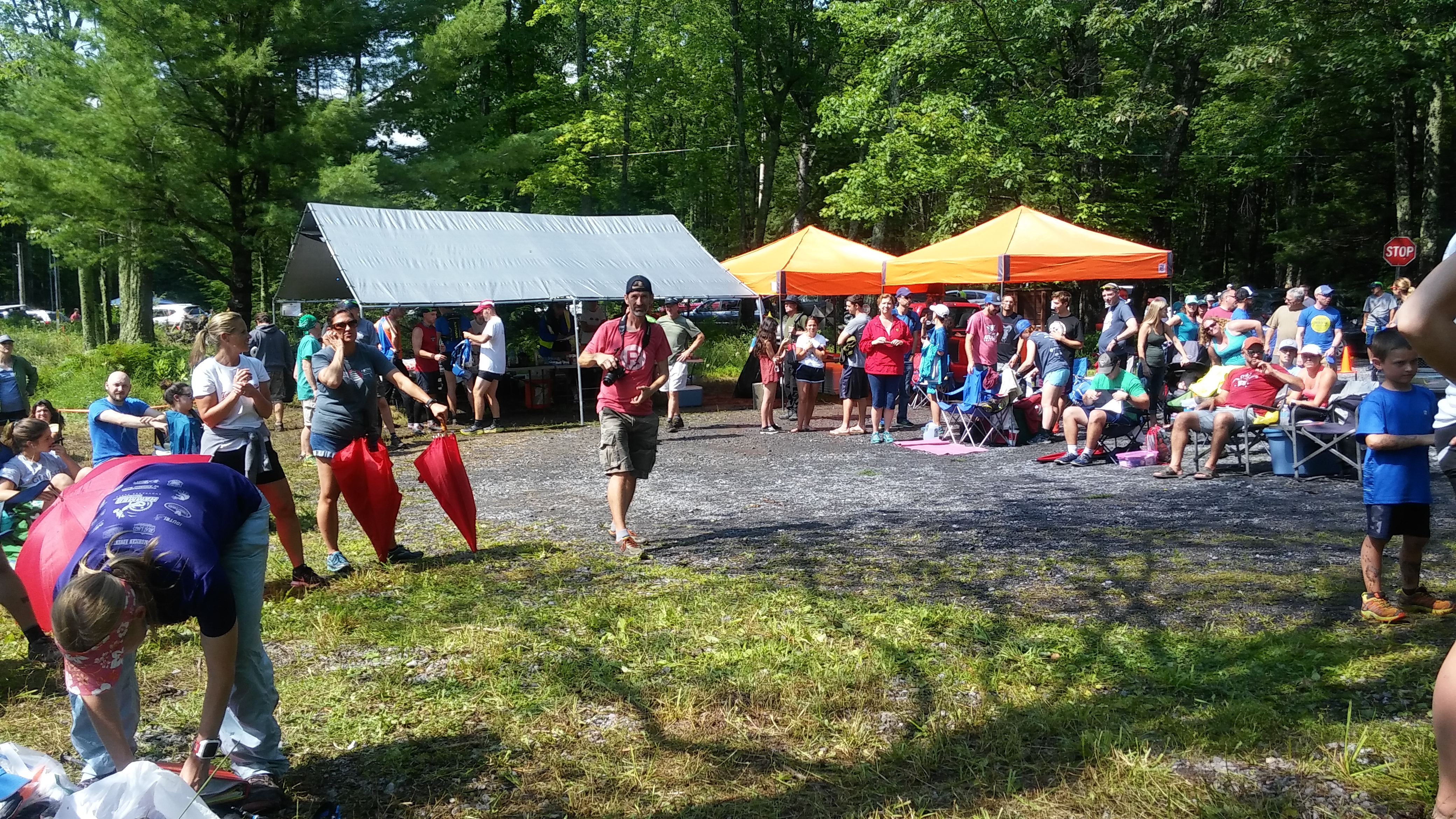
As I ran through the course, I realized how little I remembered from the prior year. Some sections looked familiar, but I was constantly being surprised by which aid station was coming up or how steep/long/technical/sucktacular a hill was. And I’m totally fine with that. There was one runner I ran with for a bit who had the course profile printed out so he knew exactly what was coming up. That horrifies me. The last thing I want to know is that there’s a nasty 1,200 foot climb coming up in 3 miles. I would much prefer to just cruise along and take things as they come. Runners talk about a state of flow and this is how I best achieve it. The only thing I need to know is how far until the next aid station. I don’t mean to cast aspersions at how others run these races. These are all unique experiences, we all approach them differently, and what works for me probably isn’t going to work for you. They say life is an experiment of one and that’s definitely how you need to approach running 100 miles.
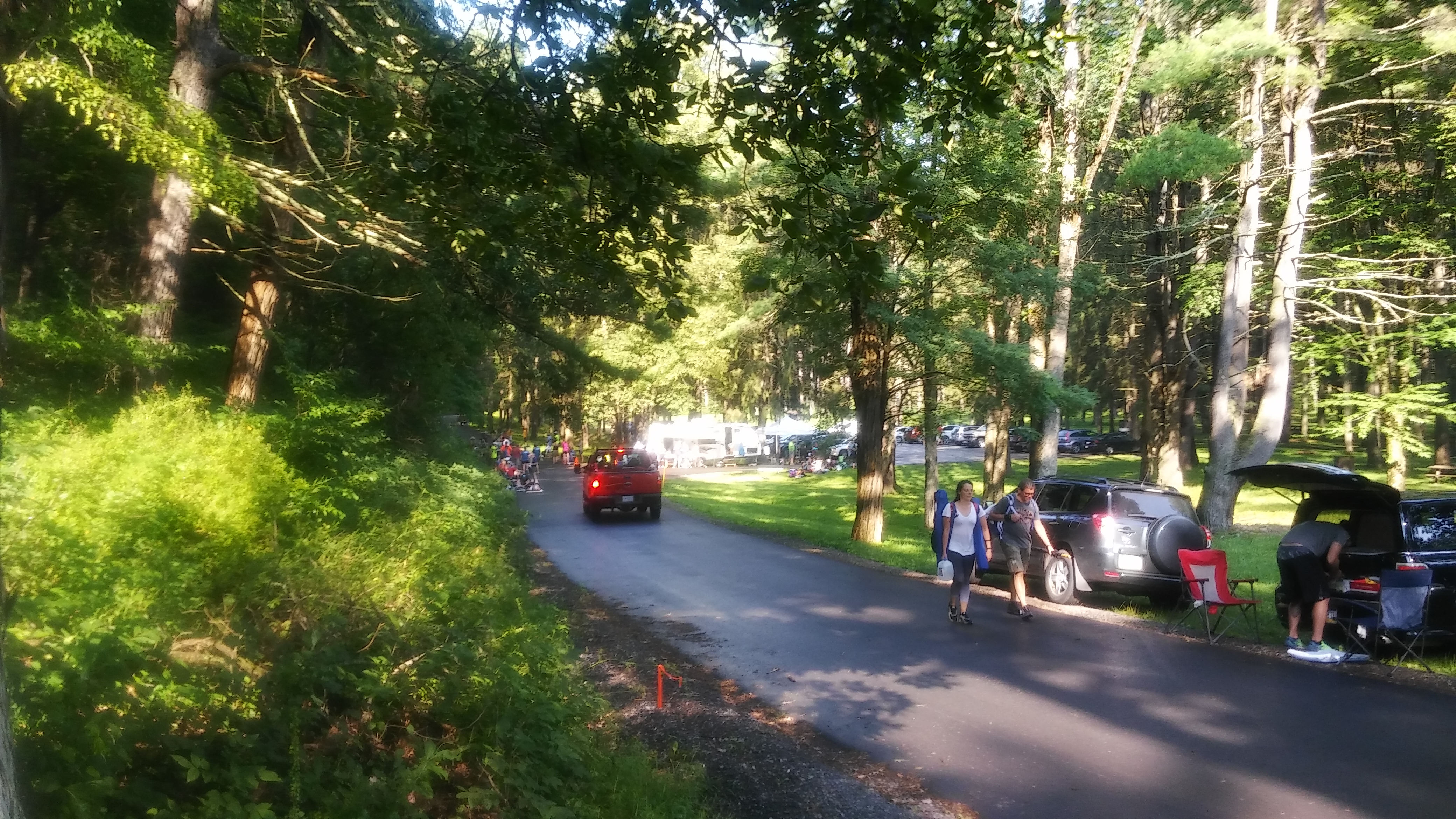
There’s a nice easy gravel road heading into Hyner Run, which I enjoyed. This was were I had all my technology stashed. I grabbed my headlamp, MP3 player, backup Garmin watch, and battery storage device and hit the trail. And the trail out of here heads straight up. I don’t think this climb cracks the top five from a difficulty standpoint, but it’s a close call. There’s a beautiful ridge-line that you run across, however the entire 7.9 miles into Dry Run ended up being more challenging than I recall. I was feeling OK and happy to notice that I got into the Dry Run aid station (mile 51.1) a little ahead of last year since it was still fully light and last year the sun was down.
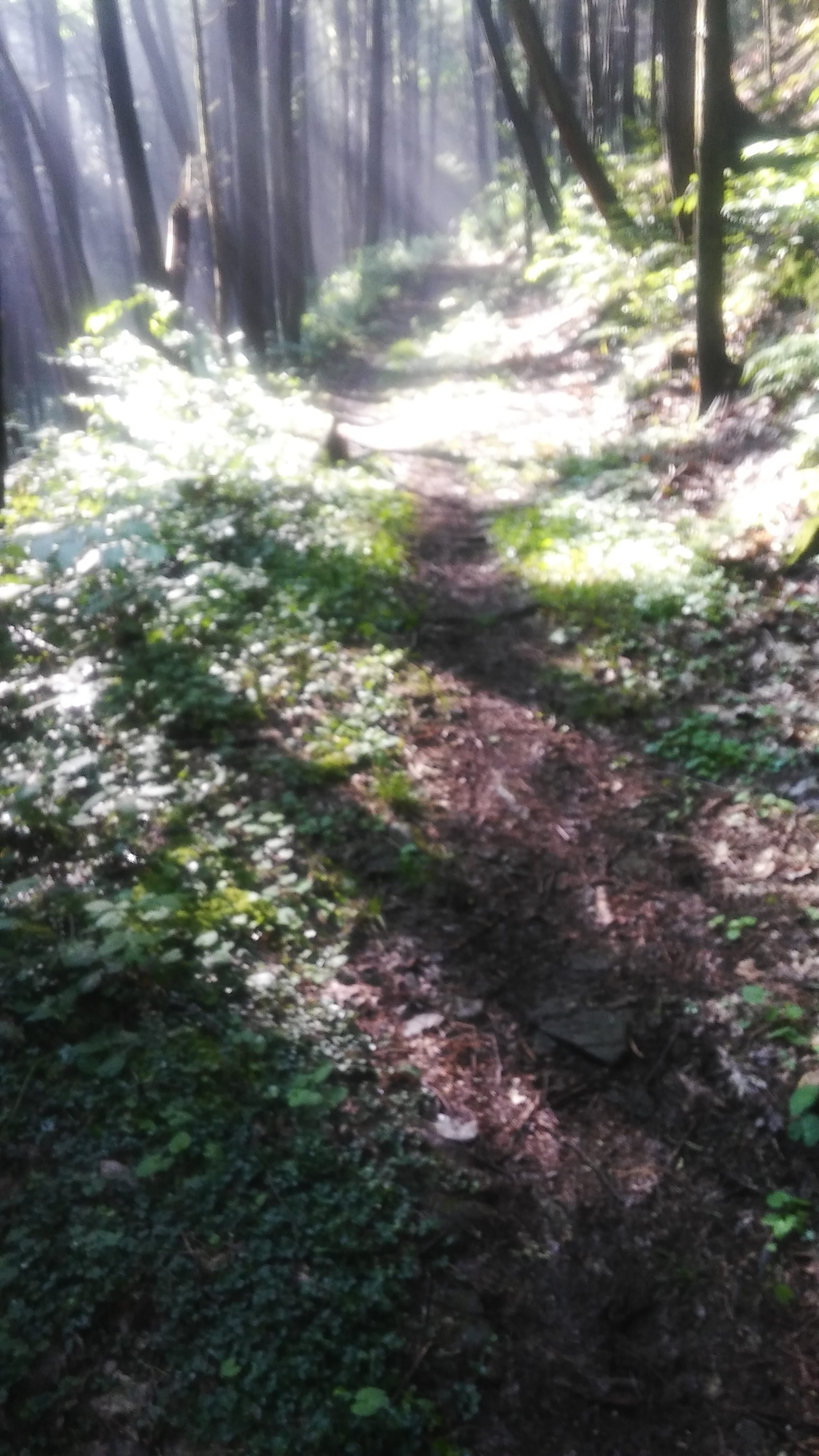
The next section is the shortest of the course (3.6 miles) and then you’re into Halfway House, which is more than slightly misnamed since there’s no house, just a couple canopies. I spent a couple extra minutes in this aid station getting ready for the night. I swapped out of my short sleeve T-shirt into a long sleeved one since the temperatures were expected to drop into the 50s. I also grabbed a pair of gloves and put them in my pockets. This stop ended up taking a little longer than I thought, but I was in no rush. I knew I had about 9 miles until the next full aid station so made sure I had everything I needed.
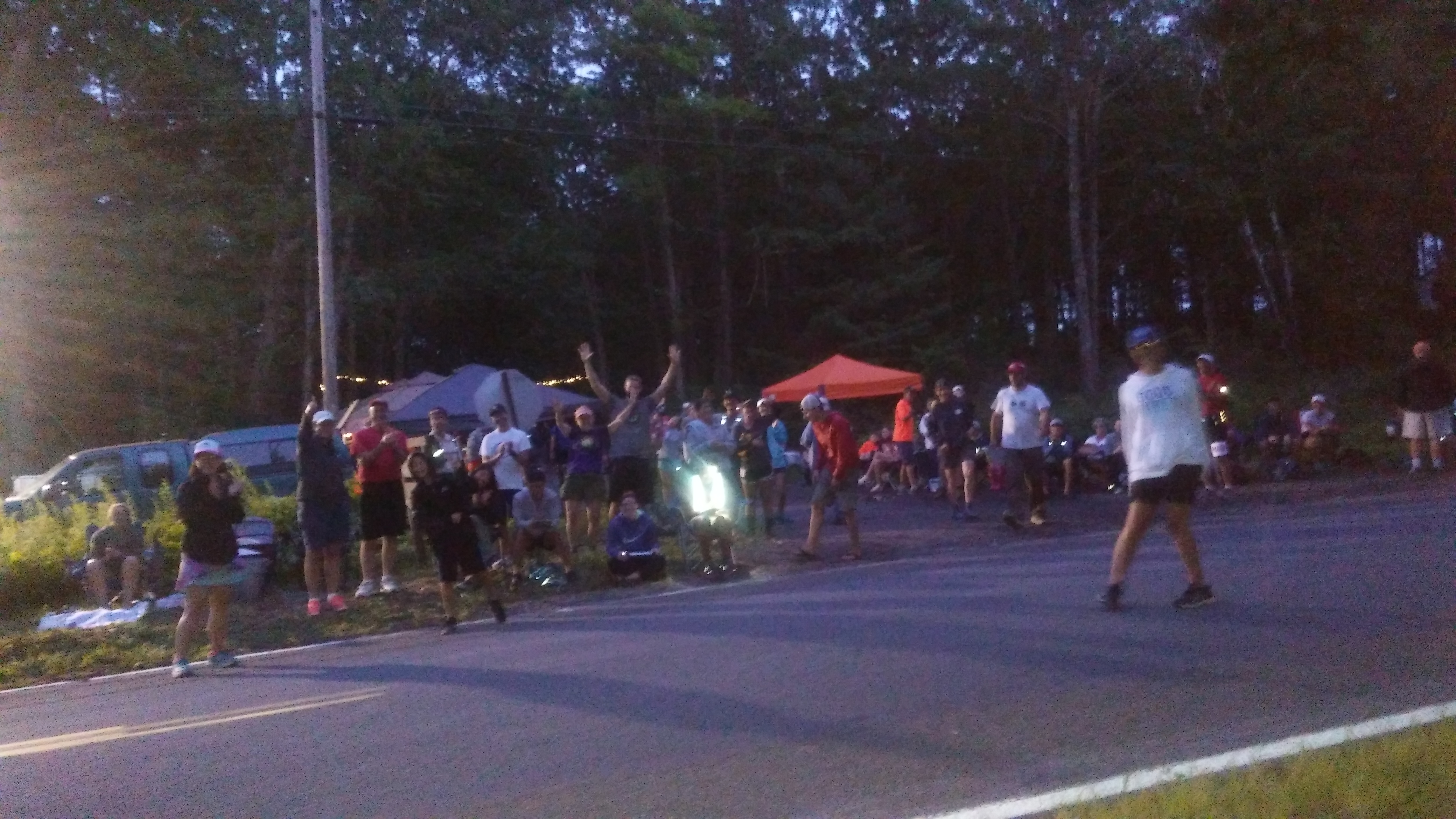
It’s always early in the night where the details of 100s start becoming indistinct. Your perspective goes from a 360 degree panoramic view of the world to the six foot lit sphere of trail immediately in front of you. There is nothing in running more conducive to entering the flow state than running at night in the woods. There are no details to keep track of so your mind just drifts along until you reach the next aid station. Eventually I got to the road section heading into Slate Run and I was excited to see I could run some of it. Not much, but enough to know I was feeling better here than last year. Of course, I still got passed by four or five people heading in. The aid station is around behind a building and while I was a little disoriented last year, I knew exactly where I was going this time. I rolled into the aid station, found my drop bag, and grabbed a new water bottle. This I handed to one of the volunteers and asked for them to fill it up with coffee. I knew I was going to need some caffeine at some point as it’s somewhere around midnight by this point. Similar to last year, I got a weird look from the guy filling it up. I like to use 2 different bottles while I run so I can mix up what I drink other than water. After a brief visit to the port-a-potties, I was back out onto the trails. Throughout the rest of the night, I was very cold leaving each of the aid stations so would end up putting my gloves on for 5-10 minutes until I warmed up at which time they would go back into my pockets.
Stop me if you’ve heard this one before, but the climb out of Slate Run is just brutal. The trail starts out somewhat technical as you’re almost bouldering in some places, then becomes this long grind up what appears to be an old fire road, but may just be a double track trail. It must be the latter because it’s far too steep otherwise. As I moved along, I noticed my headlamp started to get dimmer and dimmer. This was a new headlamp for me and while I tested it out a little bit, I hadn’t timed how long it would stay bright (rookie mistake #1). Normally, this wouldn’t be a big deal as I’d just swap out the batteries with my back-ups. Unfortunately, I forgot to put these in a drop bag (rookie mistake #2) so had to make do. It seemed that as the light got dimmer, I became more and more sleepy. It didn’t seem to matter how much coffee I was drinking (and it was a decent amount), it would only provide a brief pick-up. I realized my pace was slowing, but there was nothing I could do. I still held out hope for a morning revival so was not concerned.
Finally, I arrived at the Algerines aid station, which was my literal oasis in the night. The place was absolutely hopping and my spirits brightened up a little. I grabbed a couple pieces of watermelon and sat down in a chair for the first time to try and collect myself. When a volunteer came up with my water bottle refilled, I sheepishly asked if they had any triple A batteries. He said they did and rushed off to grab some for me. A lot of times aid stations won’t stock them (they’re expensive after all) and I really felt bad that my poor planning reduced me to begging for some, but not only did the guy come back and get me set up, but he offered to give me extras. I declined knowing I wouldn’t need them, but this is just one of many examples of the awesomeness of the volunteers as well as the race organization.
As I left the aid station, I noticed that my headlamp had suddenly morphed into a flood light and my drowsiness vanished for good. I had just been cruising along through the night not caring too much about my pace partly because I didn’t want to push things and hurt myself by tripping and falling, but mostly because I hadn’t remembered any of the splits through here. I knew I was into Long Branch at 5am last year though so this was going to be a good gauge of where I was. Eventually, I was able to cover the 6.5 miles in just over 2.5 hours (this section may be even tougher than those numbers suggest) and was content to roll in 15 minutes ahead of last year. After quick gas-and-go, I was out of there down the trail.
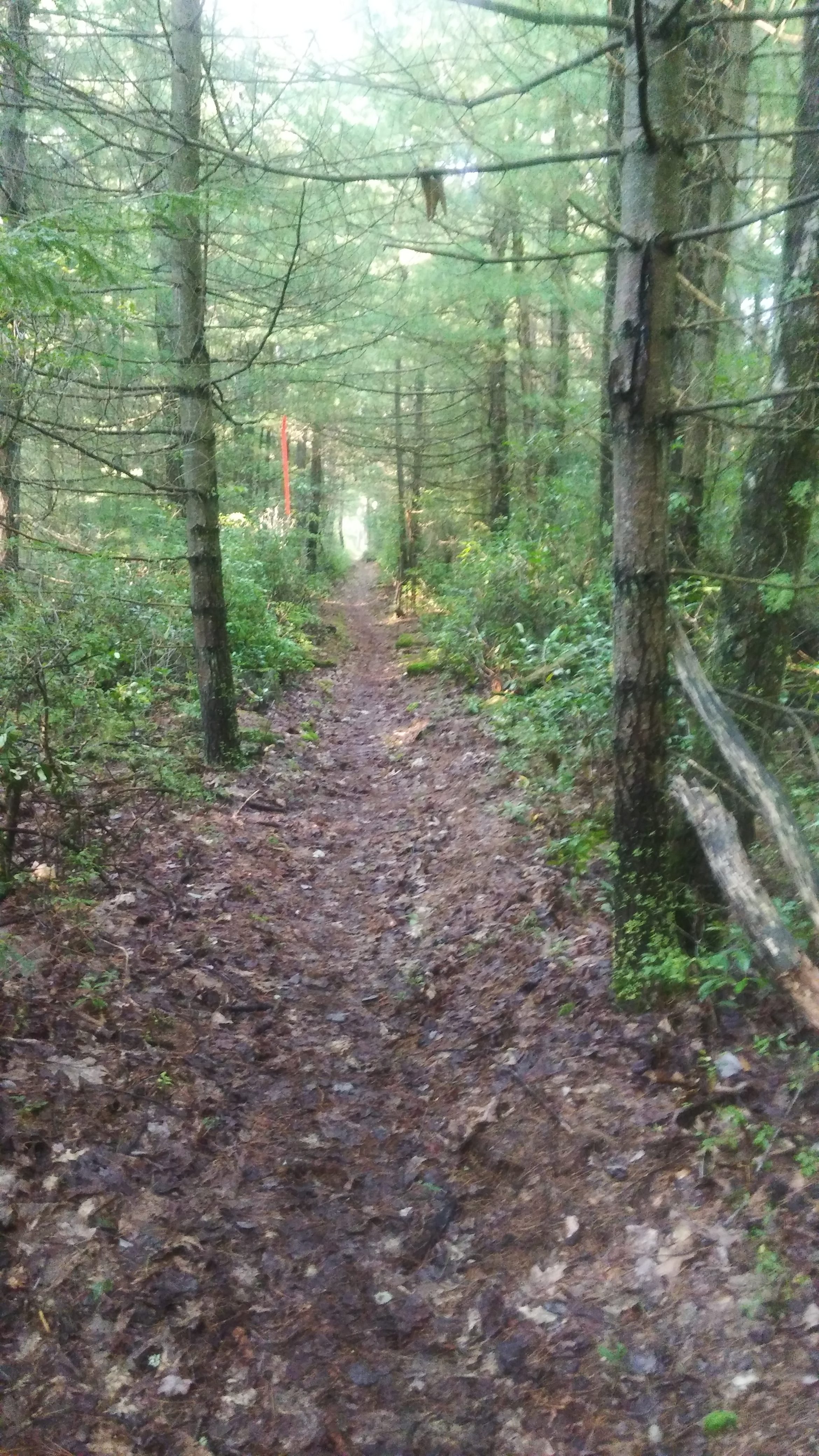
There’s a nice downhill section before you get to the endless little rollers right before Blackwell, yet I wasn’t able to take advantage of them nearly as well as I had hoped. My feet had been progressively deteriorating for quite some time (4 or 5 blisters plus a hot spot on each sole), however they were no worse than dull pains and nothing close to the issues I was having last year. I rolled into Blackwell just as it was light enough to forgo my headlamp so off it went into my drop bag. I spent a couple minutes taking care of some chaffing issues and was able to leave the aid station 27 minutes ahead of last year (6:33 am vs. 7 am).
This put a little hop into my step until I hit the last major climb on the course. It goes up so far that when I reached the top, I was greeted with the coolest scene I’ve ever witnessed in any race that I’ve done. Clouds or fog covered the entire valley and all you could see where the surrounding peaks popping up. I hadn’t noticed the cover when I was in the aid station and yet amazingly the top of it was still several hundred feet below me. I whipped out my phone to take a picture, but it was completely dead. I tried a couple times to start it up to no avail. Sigh. So I started down the pretty steep pitch and it was here that I discovered the damage that I’d done to my poor quads. I was able to make OK progress despite feeling a dull ache with each step. Nothing too acute. Just one more reminder that these races can be a physical war of attrition as you move later and later into them.
I (slowly) arrived at Sky Top knowing that something wasn’t entirely right. It took a bit of thought, but I decided I wasn’t getting enough carbohydrates into my body. I was getting enough calories with my Ensure Plus shakes, but not enough sugar to help me run efficiently. The nice volunteers filled a bottle with Mountain Dew and while I would never recommend the coffee/Dew combination I was forced to drink, it really ended up doing the trick for me. As I’m standing at the table mulling which candy would toss in my bag for the trail, I glance over at another runner and notice his name is Something-or-other Jurek. I look up at him and he gives me this look like he knows exactly how the next 2 minutes are going to proceed. I wait a second trying to decide whether to ask or not and finally decide to Be That Guy. “So are you related?” He smirks and says they’re distant cousins. That they grew up fairly close together. I mumbled something along the lines of “cool”. I think hope I wished him good luck as I turned back to the AS table and he headed out. Keep in mind I’m 27+ hours into the race at this point. I’m lucky I can still see straight let along string together coherent sentences.
My legs start feeling better (yeah sugar!) and mentally I’m starting to come back around. One of the things I’ve learned doing these races is that your physical and mental states are almost perfectly correlated. As one goes, so goes the other. The 8 mile run into Barrens is among the longest between aid stations, but it’s not too bad outside of the stupid hill at mile 90 that I didn’t remember being as long as it was. I was making great time and ran quite a bit through here. At Barrens, I topped up my Mountain Dew, grabbed some gummy bears, threw my gloves in my drop bag, and was down the trail.
It was here that I just entered cruise control. There’s a nice easy 2 mile section, mostly downhill, and I was able to run most of it. I could have pushed harder, but I was tracking ahead of last year and just didn’t care about time. I remembered my only goal during this race was to have fun so that’s what I did. I was just out for a walk in the park. Fair warning that the section into the last aid station (Hacketts) will take longer than you think entirely because it’s the last one before the finish. You’ll end up looking so closely for it, that the time will just drag on. Or at least, that’s how it was for me. The only disappointing thing for me about this aid station was finding out I had 3.8 miles left when I thought it was only 3.2 miles. Not a huge thing, but a thing nonetheless.
There’s a modest hill after the aid station followed by flattish section and then the last 1.5 miles is all downhill. As I’m gingerly coming down the last steep trail section, guess who blows by me like I’m standing still (I wasn’t mind you, but a neutral observer may wish to debate the point)? None other than Scott Jurek’s distant cousin. Apparently, he stopped for a 3 hour nap after I had last seen him. So here I’ve been grinding this thing out for the last 19 miles and he had been sleeping for half of it. I’m always amazed at the athletic ability of others that I get to share the trails. Many of them are simply incredible. A minute later, another runner comes flying by me, too. He must have had a long rest as well otherwise he’s got no business finishing with me. And then I’m out of the woods (literally), across the road, and running down the finishing chute for a finish time of 33 hours 29 minutes or 75 minutes better than last year. But time is really secondary in races like Eastern States as any finish is a good finish.
I hung out afterwards for a couple hours cheering on the other runners as they finished. And then? I hopped in my car and drove 4 hours home. There’s a fine line between hardcore and dumb. I just hope I can keep myself on the right side of it.

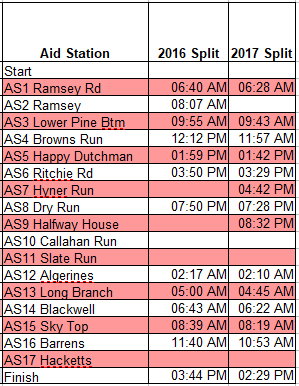
Great recap and stellar pacing for your second finish!
Congrats!!!! That was a hell of a day/night/day!!!
Excellent race report. I found myself nodding in agreement with so many of your sentiments throughout the race. I was right behind you (#88).
Congrats on the finish!
Congratulations! Sounds like a brutal race! I think you’ve talked me into it 🙂